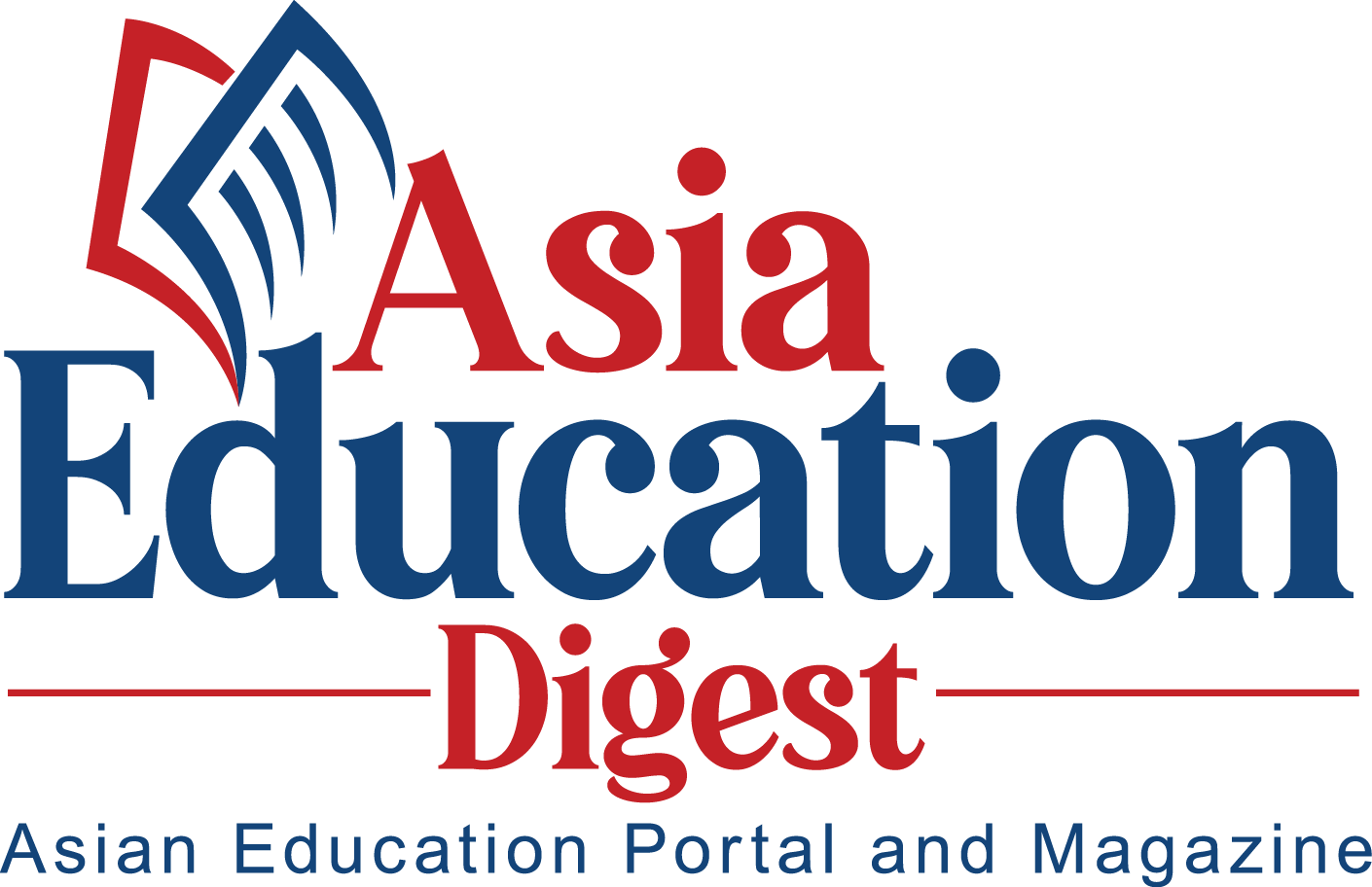Lifelong learning goes beyond formal education, encompassing self-directed learning, on-the-job training, and personal development. In the current fast-paced scenario, lifelong learning is essential for staying competitive in the workforce, fostering personal growth, and driving innovation. It empowers individuals to embrace challenges, adapt to new technologies, and contribute meaningfully to their communities and industries.
In this regard, Asia Education Digest got to speak to Mr Deepak Majumder, Manager – Human Resources, Apollo Hospitals, for a deeper understanding and finer details. Here are excerpts from the email interview with Mr Majumder.
AED: How do you define ‘lifelong learning’ in the context of professional growth and organizational sustainability?
Mr. Majumder: Lifelong learning, to me, is the continuous pursuit of knowledge and skill enhancement throughout one’s career—not just as a means of personal development, but as a strategic necessity for professional relevance and organizational sustainability. In today’s rapidly evolving business environment, where technologies, industries, and workforce dynamics are constantly shifting, the ability to learn, unlearn, and relearn has become a critical competency.
From a professional standpoint, lifelong learning enables individuals to expand their expertise, remain agile, and take on new challenges with confidence. For organizations, fostering a culture of continuous learning ensures a future-ready workforce that can drive innovation, improve productivity, and maintain a competitive edge. It also cultivates resilience, helping both individuals and organizations adapt to disruptions and seize emerging opportunities.
AED: In your experience, how does an organization foster a culture of continuous learning and adaptability among its employees?
Mr. Majumder: Fostering a culture of continuous learning and adaptability begins with leadership commitment and a clear vision that values growth as a core organizational priority. In my experience, the most effective organizations integrate learning into the fabric of their daily operations—not as a one-time initiative, but as an ongoing journey.
We have adopted a multi-dimensional approach. Firstly, we invest in structured learning platforms and training programs that address both technical and behavioral competencies. Equally important is encouraging on-the-job learning through stretch assignments, cross-functional projects, and mentorship opportunities, which help employees gain real-time exposure and build adaptive skills.
Another key factor is creating a psychologically safe environment where employees feel encouraged to ask questions, experiment, and even fail without fear of judgment. This promotes innovation and agility. We also recognize and reward learning efforts—whether it’s earning a certification, leading a knowledge-sharing session, or driving process improvements.
Lastly, and most importantly, we align learning with business strategy. When employees understand how their development contributes to broader organizational goals, it creates a sense of ownership and motivation to keep evolving. In a sector like healthcare, where change is constant, building such a learning culture is not just beneficial—it’s essential for survival and success.
AED: How can HR leaders help employees develop a growth mindset that supports lifelong learning, especially in fast-changing industries?
Mr. Majumder: A growth mindset is not just a personal attribute—it is a strategic advantage that enables employees to see change as an opportunity rather than a threat. The starting point is for HR leaders to model this mindset themselves—demonstrating adaptability, curiosity, and openness to new ways of working. Embedding growth-oriented behaviors into performance management ensures that employees are recognized not only for achieving results, but also for their ability to learn, adapt, and innovate in response to market shifts.
To align with dynamic business requirements, HR must create learning opportunities that mirror real-world challenges—such as cross-functional projects, exposure to emerging technologies, and problem-solving assignments that address current market needs. This ensures that skill-building is directly relevant to staying ahead of the competition. In a competitive business landscape, this psychological safety fuels innovation, agility, and resilience—qualities that help organizations respond faster and better than rivals.
AED: What are some of the key challenges companies face when promoting lifelong learning, and how can they overcome them?
Mr. Majumder: From a business perspective, the biggest challenge is aligning learning initiatives with dynamic market requirements. In competitive industries, irrelevant or outdated training not only wastes resources but also risks leaving employees underprepared for real-world demands.
Overcoming these challenges requires a multi-pronged approach:
- Integrate learning into daily work through micro-learning modules, on-the-job projects, and cross-functional assignments.
- Personalize learning paths so (that) employees can choose courses or projects aligned with their career aspirations and the organization’s evolving needs.
- Demonstrate ROI by linking learning outcomes directly to business performance, innovation, and market competitiveness.
- Promote a growth mindset from leadership downwards, ensuring that learning is viewed as a strategic priority rather than a secondary activity.
AED: How does technology, such as online platforms and AI-driven learning tools, contribute to making lifelong learning more accessible and scalable within organizations?
Mr. Majumder: Technology has transformed lifelong learning, making it more accessible, scalable, and responsive to changing business needs. Online platforms remove barriers of location and time, allowing employees to learn at their own pace and in formats that suit them best. This is invaluable for large, diverse organizations where delivering consistent training can otherwise be challenging.
AI-driven learning tools add another dimension by personalizing learning paths based on individual skills, career goals, and performance data. They can curate relevant content, simulate real-world challenges, and offer instant feedback. However, AI is still evolving, and its full potential in workplace learning has (is) yet to be realized. To truly benefit, employees must also develop the skills to effectively use these tools—blending technological capability with human adaptability.
AED: Can you share some examples of successful learning initiatives that have helped your employees enhance their skills and contribute to sustainability goals?
Mr. Majumder: At Apollo Hospitals, we view learning as a strategic enabler not only for business growth but also for advancing our sustainability agenda. Several initiatives have proven successful in enhancing employee skills while driving long-term organizational and environmental impact.
Our Continuous Clinical Excellence Programs for doctors, nurses, and allied health professionals. These combine advanced medical training with modules on ethical practices, patient safety, and resource optimization—ensuring high-quality care.
From a leadership perspective, our Leadership Workshops help managers integrate learning principles into their operational strategies. This empowers leaders to make decisions that balance business objectives.
Additionally, our adoption of digital learning platforms for compliance, quality management, and operational efficiency has reduced the need for physical materials and presence.
These initiatives demonstrate that skill enhancement and sustainability are not separate goals—they reinforce each other, enabling our workforce to innovate responsibly while maintaining competitive advantage in a dynamic healthcare industry.
AED: What role does leadership play in encouraging and modeling continuous learning within an organization?
Mr. Majumder: Leadership support is the cornerstone of building a culture of continuous learning. When leaders actively endorse, resource, and participate in learning initiatives, it signals to employees that development is a strategic priority, not an optional activity. This support comes in multiple forms—allocating budgets for training, providing time and flexibility for learning, and integrating skill-building goals into performance metrics.
Strong leadership also ensures that learning is aligned with dynamic business needs, making it directly relevant to employees’ roles and the organization’s competitive positioning. By sponsoring programs, mentoring teams, and recognizing those who apply new skills effectively, leaders reinforce the value of continuous improvement.
AED: How do you measure the impact of lifelong learning programs on professional excellence, employee engagement, and overall organizational performance?
Mr. Majumder: Measuring the impact of lifelong learning requires a balance between quantitative metrics and qualitative insights to capture its full value. From a professional excellence standpoint, we assess improvements in technical skills, certifications earned, and application of new knowledge in real work scenarios. This often includes tracking error reduction, faster problem resolution, and improved quality scores in both clinical and non-clinical functions.
For employee engagement, we look at participation rates in learning programs, feedback from post-training surveys, and retention statistics. A positive trend here often indicates that employees feel valued, see growth opportunities, and are more committed to the organization.
At the organizational performance level, we correlate learning initiatives with business outcomes such as higher productivity, reduced operational costs, better customer/patient satisfaction scores, and innovation metrics. For example, training in process improvement has directly contributed to shorter turnaround times and more efficient resource utilization at Apollo Hospitals.
In essence, the real measure of lifelong learning’s success lies in its ability to enhance individual capability while driving sustainable organizational growth—turning learning into a strategic advantage rather than just a compliance activity.
AED: With the future of work increasingly relying on automation and AI, how do you see lifelong learning shaping employee career paths in the next 5–10 years?
Mr. Majumder: Over the next 5–10 years, these technologies will become even more embedded in clinical workflows, meaning that healthcare professionals will need to continuously update their skills to leverage these tools effectively.
Lifelong learning will be essential in enabling clinicians, nurses, and allied health professionals to integrate AI-driven insights into their decision-making, resulting in faster, more accurate diagnoses, personalized treatment plans, and improved patient outcomes.
AED: What advice would you give to professionals looking to prioritize their personal and professional development through lifelong learning?
Mr. Majumder: My advice is to treat lifelong learning as a strategic investment in yourself—not something you do only when your job requires it, but as a continuous habit that keeps you relevant, adaptable, and fulfilled.
Start by identifying the skills and knowledge areas that will matter most in your field over the next few years, and create a personal learning roadmap. This could include formal courses, certifications, reading, mentorship, or practical projects. Remember that learning is most effective when it’s a blend of structured education and hands-on application.
Equally important is developing a growth mindset—embracing challenges, seeking feedback, and viewing setbacks as learning opportunities rather than failures. In today’s fast-changing world, adaptability is just as critical as expertise.
Make learning a part of your routine, even in small, consistent doses—whether that’s 30 minutes of reading daily, a weekly skill practice, or quarterly participation in a workshop. Use technology to your advantage, but also focus on building human skills like communication, collaboration, and problem-solving.
Finally, stay curious and open. The ability to connect ideas across different domains often leads to the most valuable insights and innovations. Lifelong learning isn’t just about career advancement—it’s about continually expanding your capacity to contribute meaningfully to your work, community, and personal growth.


